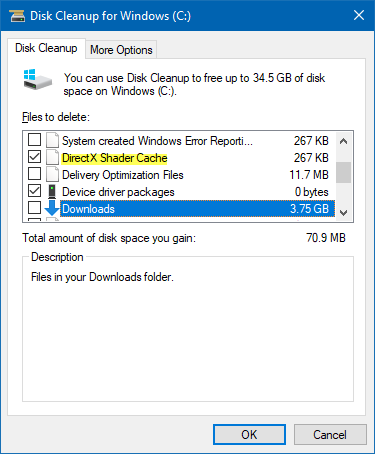

Command-line version of Disk Cleanup offers more cleaning options When you open it using sageset, as mentioned above, you will see the following clean-up options. If you have noticed, these are the options available in Cleanmgr.exe when you run it manually. This will open the Command Line version of Disk Cleanup Utility offering many more cleanup options. Let’s begin with executing the following command: cleanmgr /sageset:1 In effect the /sagerun:n switch will run the specified tasks that are assigned to the n value by using the /sageset switch. The number denotes the settings which will be stored in the Registry when your run sagerun switch later on – and basically lets you make shortcuts to different stored configurations or schedule automatic cleanup in the Task Scheduler. This switch /sageset displays the Disk Cleanup Settings dialog box and creates a registry key to store the settings. To begin, open an elevated command prompt, type cleanmgr /sageset:n – where n can be any integer between 1 and 255.

Command-line version of Disk Cleanup Utility or Cleanmgr.exe

Use Task Scheduler to run it automatically using sageset and sagerun arguments. We will see how to use the Command line version of Disk Cleanup Tool or Cleanmgr.exe with more cleaning options. In this tutorial, we will see how to activate some additional cleaning options and automate the cleanup operation, so that you don’t need to run the Disk Cleanup Utility or Cleanmgr.exe in Windows 11/10/8/7 manually, every time. Just earlier today, we saw how we could force Disk Cleanup Utility to delete ALL temporary files, including those temporary files created in the last 7 days. You may be aware that the command-line version of the Disk Cleanup Utility in Windows offers many more clean-up options.


 0 kommentar(er)
0 kommentar(er)
